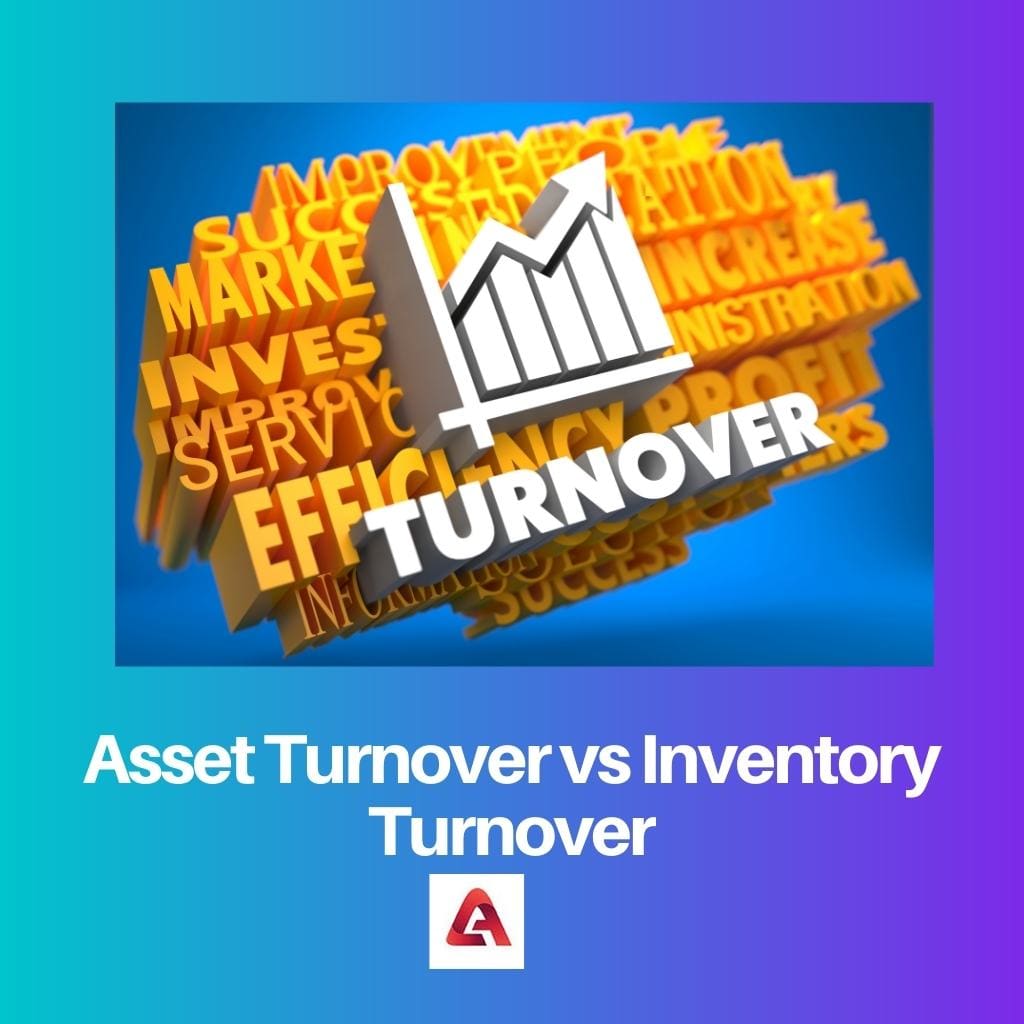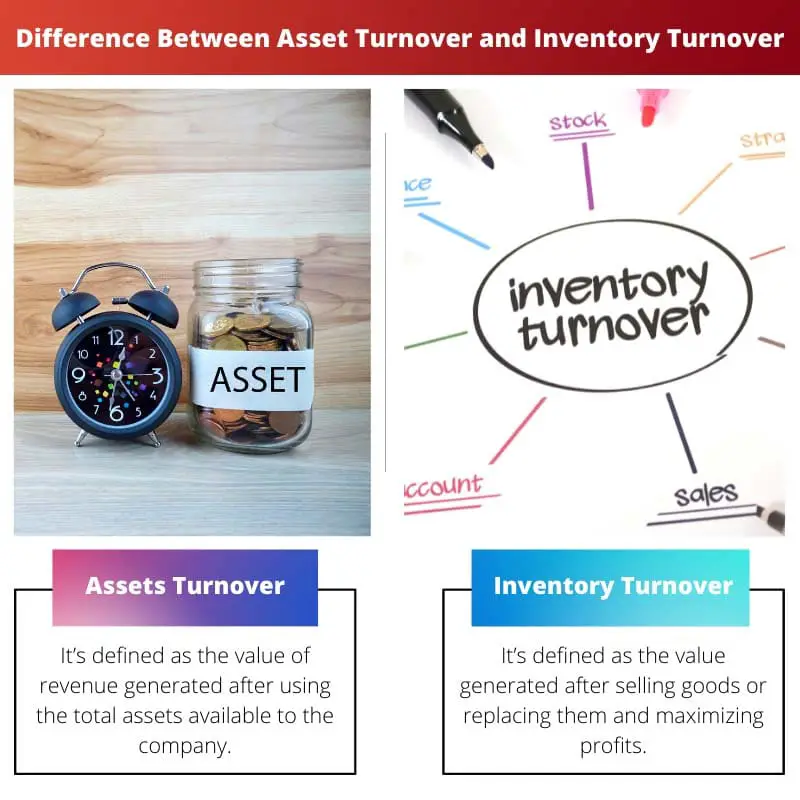Every company is in a race to book maximum profits. Investors analyze charts and graphs to maximize their worth.
The market is in a rush. Accountants restlessly work to meet deadlines and create huge figures at the end of the year. Then accounting asset turnover and Inventory turnover comes up that matter the most.
Key Takeaways
- Asset turnover measures how efficiently a company uses its assets to generate revenue, while inventory turnover measures how it sells and replaces its inventory.
- Asset turnover is calculated by dividing net sales by total assets, while inventory turnover is calculated by dividing the cost of goods sold by average inventory.
- A high asset turnover indicates that a company generates more revenue with less asset investment. In contrast, a high inventory turnover indicates that a company sells its inventory quickly and efficiently.
Asset Turnover vs Inventory Turnover
The asset turnover ratio calculates a company’s net sales by its total assets. The inventory turnover ratio is calculated by dividing the cost of goods sold by the average inventory. It measures how a company sells and replaces its inventory within a period.

The asset turnover ratio indicates the revenue generated through its available assets. It calculates the efficiency of a company that uses its assets to generate profit.
The more the asset turnover ratio, the more efficient a company is in generating money.
The inventory turnover ratio is the calculated figure through which a company generates profits by selling or replacing goods or inventory.
To calculate the ratio value, a person has to divide the total sales by the average value of the Inventory. This formula will give you the inventory turnover ratio.
Comparison Table
| Parameters of Comparison | Asset Turnover | Inventory Turnover |
|---|---|---|
| Definition | It’s defined as the value of revenue generated after using the total assets available to the company. | It is the value generated after selling or replacing goods and maximizing profits. |
| Formula | Calculated by dividing total sales with (beginning asset+ ending assets)/2. | Calculated by dividing total goods sold by the average value of assets available. |
| Indications | It is the value generated after selling or replacing goods and maximizing profits. | Sometimes a low inventory Turnover ratio is a good thing, such as when the price could go up. |
| Consideration | Asset Turnover uses beginning assets, ending assets, and total sales. | Inventory Turnover uses goods and total sales. |
Value-wise | The asset Turnover ratio is quite more valuable since the higher the ratio, the higher the sales. | The Inventory Turnover ratio is less valuable because of high or low ratios, inefficiency or overstocking issues. |
What is Asset Turnover?
Profits are valuable since they drive your company and make your firm valuable. Investors also make considerable investments in those firms which are of high value.
Then there comes the asset turnover ratio. This ratio is essential to calculate how much profits have been booked in a financial year, considering the beginning and ending assets.
The calculation goes with marking a company’s assets on the balance sheet at the beginning of the year and locating the ending balance at the end of the year.
Add these two values and divide by 2, giving an average value. Calculate the total sales or revenue of the same year, and divide it by the value of the average calculated.
If a company experiences less asset ratio, it cannot make it possible to book profits from its values or assets. A large ratio means most of the company’s assets remained with them and made money.
Investors analyze this ratio to compare and compete with similar companies. A company’s asset ratio can be changed by more extensive asset sales or significant asset buying in a financial year.

What is Inventory Turnover?
Profits matter in the end. Be it from an asset or the stocks available in a company. Inventory turnover deals with the inventory available to the firm through which profits are made by selling or replacing goods.
Then term Inventory Turnover ratio comes up, which means a calculated figure after using the stocks to generate revenue.
This ratio is of great use in itself. This ratio can help businesses and companies decide on manufacturing goods, pricing them, and marketing accordingly.
This calculates the capability of a company to replace goods after being sold in the first place.
The calculation part is straightforward. Calculate the average value of goods. Then divide the sales generated by this number. You will get your desired output.
A low ratio says weak or lesser sales, and maybe the inventory is in excess. A high ratio or faster ratio means strong sales and inadequate inventory.
These ratios help decide future growth and help plan to avoid loss or overstocking.

Main Differences Between Asset Turnover and Inventory Turnover
- Asset turnover is the revenue generated through assets available. On the other hand, inventory turnover refers to the revenue generated through selling and replacing goods.
- The calculation of asset turnover is quite complex since it’s done on the balance sheet. In contrast to that, inventory turnover calculation is simple.
- A high ratio in asset turnover means enormous profits. In comparison, a high ratio in inventory means either good sales or insufficient stocks.
- A lower ratio in the case of asset turnover means a company didn’t make many profits. On the other hand, a lesser ratio of inventory turnover will mean overstocking.
- Using the asset turnover ratio, an investor can compete with similar companies. In contrast, using the inventory turnover ratio, the analyst can change pricing, manufacturing, and future purchases.

- https://link.springer.com/article/10.1023/A:1012430513430
- https://pubsonline.informs.org/doi/abs/10.1287/mnsc.1040.0298




